I’ve reviewed quite a few Motorola phones over the years—mostly budget and midrange models—and each year, they bring more and more value at affordable prices. At the top of Motorola’s midrange Moto G family in North America is the Moto G Stylus 5G, which often gets some of the better specs of the lineup without stepping into flagship territory. This year, however, Motorola stepped things up quite a bit with the Moto G Stylus 5G 2024.
While still very much a midrange phone, priced moderately at just $399, the Moto G Stylus 5G 2024 feels like it’s trying to be a flagship. When it comes to design, performance, and even some specs, this phone does its best to emulate the flagship experience while retaining its low price tag, and it’s surprising just how well it pulls it off. Heck, some of the specs match or rival those from Samsung’s base Galaxy S24, but at just half the price.
Of course, a few sacrifices have to be made, but they’re hardly worth complaining about. Sadly, the marquee feature of this phone is still probably the least interesting thing about it, and there are some software misses despite the changes to Motorola’s UI with Android 14, but those shouldn’t deter you from an otherwise great phone.
Moto G Stylus 5G 2024: Price & availability
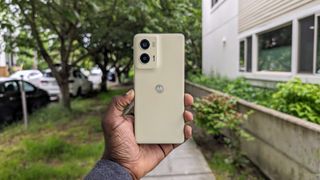
The Moto G Stylus 5G 2024 was announced on May 9, 2024, and goes on sale on May 30 in the United States. You can purchase the phone unlocked from Amazon, Best Buy, and Motorola. In the coming weeks, the phone will be available through various carriers, such as T-Mobile, AT&T, Cricket, Boost Infinite, Boost Mobile, Consumer Cellular, U.S. Cellular, Spectrum, Xfinity Mobile, Google Fi Wireless, Optimum Mobile, Straight Talk, Total by Verizon, and Visible.
The phone is available in two colors, Caramel Latte or Scarlet Wave, and retails for $399 before any deals or promotions, although pricing (and certain specs) may differ by carrier.
Moto G Stylus 5G 2024: Design & display

Each year, Motorola’s smartphones take on completely new looks, with a design that usually spans the company’s entire portfolio, from budget to flagship. This creates a level of uniformity, even if it can make it hard to tell the phones apart just by looking at them from behind. This year’s aesthetic focuses on alternative materials, with a back panel made of vegan leather (a fancy name for plastic) that seamlessly envelops the entire rear of the phone, protruding slightly only for the dual camera system in the top corner.
As far as hand taste goes, the phone feels incredibly soft and, dare I say, premium. The brushed frame may be plastic (you wouldn’t even know it), but it somehow adds to the premium look and feel of the phone, with a slight glossy finish on both ends toward the rear panel and the display. In regular use, the vegan leather keeps the phone from getting too hot when pushing the processor while also keeping the phone from getting too cool and slippery like a typical glass phone.


On the front is a large 6.7-inch OLED display, which is quite a step up from the LCD panels found on just about every other Moto G phone. The colors on the display are incredibly vibrant, even after I switched the phone to Natural color mode. You can also choose Radiant and Vivid color modes for the display, but I find the Natural mode is plenty. The 120Hz refresh rate also brings home just how nice this display is for a $400 phone. My only complaint is that I feel that the panel may be too contrasty and that darker parts of images and video appear a smidge darker than they should.
If you suffer from PWM sensitivity, you’ll be happy to know that despite this being an OLED panel, Motorola has included a flicker-prevention setting, which should help make it easier to use the phone.
Motorola worked some magic around the display to significantly reduce the bezels to flagship levels. I can’t say for sure, but just by looking, I feel as though the bezels on the Moto G Stylus 5G 2024 are smaller than those of the $699 Google Pixel 8. Frankly, you could easily mistake this phone for a flagship, no matter which way you look at it.

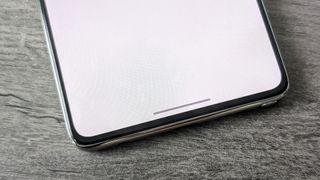
At 190g, the phone feels lighter than you might expect, and it might throw you off, but I don’t mind it. For comparison, the much smaller Pixel 8 measures 187g, while the Galaxy S24 Plus weighs a bit more at 197g despite being shorter and thinner. That said, this is a fairly large phone, so if you’re not used to that, the size may also take some getting used to.
For protection, the display is protected by Gorilla Glass 3, and the phone features an IP52 rating for water and dust resistance, so try to avoid dunking it. One benefit of the vegan leather back is that there’s one less thing to worry about when dropping it, but you’ll definitely want to grab a screen protector.
Moto G Stylus 5G 2024: Specs & performance

As noted before, Motorola really went all out with this phone when it comes to specs. Of course, for a $399 phone, there’s only so much you can do, but Motorola seemed to push the specs as much as it could. The Moto G Stylus 5G 2024 is powered by the Snapdragon 6 Gen 1, which is a curious decision since it’s the same chip powering the Moto G Stylus 5G 2023.
That said, I don’t hate that Motorola is reusing the chip from last year’s model because it performed surprisingly well then, and it performs even better now. I imagine that’s likely due to the extra RAM (8GB now instead of 6GB) helping keep apps in check. RAM Boost is on by default, but I always turn that off and recommend you do, too. You don’t need it.
In my experience, the phone has no trouble opening and juggling apps, while playing games like Honkai Star: Rail seems like a cakewalk for the chip, even on the highest quality settings. Honestly, I’ve been thoroughly pleased with how well the Moto G Stylug 5G 2024 performs, to the point that I did not really miss using an actual flagship phone. That’s saying a lot for a $400 phone.
| Category | Moto G Stylus 5G 2024 |
|---|---|
| OS | Android 14 |
| Display | 6.7” FHD+ (2400 x 1080), OLED, 120Hz refresh rate |
| Chipset | Snapdragon 6 Gen 1 |
| Storage | 128GB/256GB, expandable |
| Memory | 8GB LPDDR4X |
| Rear Camera 1 | 50MP wide, f/1.8, OIS, 1μm (2μm with pixel binning) |
| Rear Camera 2 | 13MP ultrawide, f/2.2, 120° FOV, 1.12μm |
| Front-facing Camera | 32MP wide, f/2.4, 0.7μm (1.4μm with pixel binning) |
| Audio | Dual stereo speakers, Dolby Atmos, 2 mics, FM radio |
| Protection | Gorilla Glass 3, IP52 |
| Battery & Charging | 5,000mAh, 30W wired charging, 15W wireless charging |
| Connectivity | 5G (sub-6), Bluetooth 5.1, Wi-Fi (2.4GHz & 5GHz), NFC |
| Security | Fingerprint sensor, face unlock |
| Dimensions | 162.6 x 74.8 x 8.3mm |
| Weight | 190g |
| Colors | Caramel Latte, Scarlet Wave |
And just when you think I was done with the display, Motorola surprises yet again by adding another flagship feature into the mix: an in-display fingerprint sensor. Moto G phones usually opt for side-mounted sensors, so this is quite a shift. The sensor works pretty well and unlocks the phone pretty quickly, even when waking up the display. It’s not as fast as some higher-end phones I’ve used, but it’s about as fast as the Google Pixel 8 Pro in my use. My only problem with the sensor is that it’s incredibly low on the display, and I wish it were a bit higher for more comfortable use.
Face Unlock also works about as well, although I imagine Google’s implementation on the Pixel is a bit more secure.

As for battery life, the Moto G Stylus 5G 2024 isn’t as long-lasting as some other Moto G devices that offer up to two days per charge. That said, the 5,000mAh battery can get you through the day easily, depending on your use, which is good enough for me. There are also some battery settings that can help prolong battery life, which you might want to turn on.
Charging is also quite improved, with Motorola doubling the speed from last year’s Stylus model. At 30W wired, the Moto G Stylus 5G 2024 charges a bit faster than Samsung’s smallest flagship Galaxy S24, with 15W wireless charging to match even Samsung’s premium flagship phones.
Moto G Stylus 5G 2024: Software
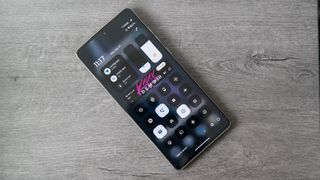
The Moto G Stylus 5G 2024 runs Android 14 out of the box, and with it come a few aesthetic changes that make the software feel a bit lighter and less like a Pixel. That includes the Quick Settings panel, which now has a nice transparent background à la One UI, a redesigned settings menu, an expanded sidebar that lets you add even more apps for quick access, fingerprint sensor animations, and more. It should all still seem pretty familiar, just with a new coat of paint in some areas to give Motorola’s software a bit more individuality.
Unfortunately, you won’t find much in the way of AI here, despite that being the hot new thing. That may be due to the limited capability of the chipset, but you do have access to the new Gemini app (despite its absence on the Motorola Razr Plus), and Motorola has a new AI wallpaper feature that creates a wallpaper from a photo in your gallery. Aside from that, you get all the same Motorola flourishes you should expect, such as the popular gestures to open the camera or turn on the flashlight.

The phone also supports Ready For, which is being updated to Smart Connect. This allows the phone to connect to a PC or external display to do some pretty interesting tricks like mirroring the phone display, creating a new instance of your phone on a second display, moving files between devices, and even sharing peripherals like a mouse and keyboard between your PC, tablet, and phone. It’s a pretty handy feature for power users who are always on the go and need an easy way to move things from the phone to the computer and vice versa.
Fortunately, you won’t find much in the way of bloatware, but the dreaded Glance lock screen makes its presence known on this phone. You can opt out of it when setting up the phone, but it will pop up every once in a while with a notification reminding you that it exists and trying to convince you to turn it on. Nice try, Moto.
Of course, the downside of the Moto G moniker is that, once again, Motorola isn’t going out of its way to bring major updates to this phone. The company promises one OS upgrade (to Android 15, no doubt, which is launching later this year) and three years of security updates.
Moto G Stylus 5G 2024: Cameras

The Moto G Stylus 5G 2024 has just two rear cameras: a 50MP primary sensor and a 13MP ultrawide. Motorola isn’t known for its camera quality, and you shouldn’t expect much from a $400 phone, but the Moto G Stylus 5G 2024 does a pretty good job regardless. Images are sharp, detailed, and vibrant, and there’s even a decent amount of dynamic range. The images won’t blow you away, but they’re perfectly useable.
The phone also does well in low-light shots, which I expect may have to do with the 2µm pixel size as a result of pixel binning. The phone gets plenty of light and isn’t overwhelmed with noise, which is exactly what I’d expect from a phone in this price range.
The ultrawide camera also isn’t too shabby and doubles as a macro camera, which can come in handy. Motorola gives you the option to auto-enhance your images after they’re taken using Google Photos, but I opted to keep my photos naturally processed, which turned out just fine.
You may also be happy to know that the phone supports 4K video capture, although you’re capped at just 30fps. You can shoot 60fps, but you’ll have to go down to Full HD resolution.
Moto G Stylus 5G 2024: Stylus
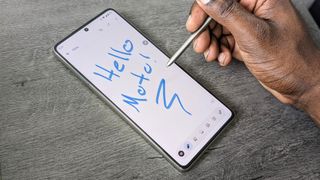
So, this phone has a stylus. Yeah, it’s in the name, and Motorola actually changed the design to make it thicker, almost giving it an S Pen-like aesthetic. That said, despite the changes, like the larger contact area and updated software to make it more responsive on the display, the stylus is probably the least interesting aspect of this phone. It’s nice to be able to pop the pen out and quickly take a note or sign a document, and the text recognition software can be helpful, but these are features I just don’t make enough use of to really care.
If the stylus had more useful features like Bluetooth support for remote capture, pressure, and angle sensitivity, or other features found on the S Pen, then I might be more inclined to use it and actually care that it’s there.
It’s not a bad thing that there’s a built-in stylus pen. But I just don’t find it to be a huge selling point, either.
Moto G Stylus 5G 2024: Competition
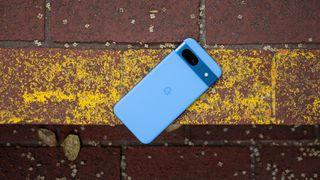
At this price range, there aren’t many phones that I can confidently recommend. You could go for the Google Pixel 8a if you’re willing to spend $100 more on a phone with a great camera and access to many of Google’s best AI features. The phone also has a flagship-level Tensor chip, so performance shouldn’t be much of a problem. Unfortunately, storage is fixed unless you shell out more money for 256GB, and charging speeds aren’t nearly as good as the Moto G Stylus 5G 2024. You’ll also have to be a bit more careful with the glass back.
The Nothing Phone 2a is a good phone that features a unique design with a light show on the back, great cameras, and an OLED display. It also comes with up to 512GB of storage and 12GB of RAM, which is uncommon at this price point. Unfortunately, it’s not as easy to buy the Nothing Phone 2a, as the phone can only be purchased from Nothing when you sign up for a developer account. Plus, the phone doesn’t fully support U.S. networks, meaning you might not get the best service.
Samsung’s Galaxy A35 is a relatively new phone that could be another good option at this price point. The phone has a 6.6-inch OLED display with a 120Hz refresh rate, a 50MP camera system, and better protection thanks to the IP67 rating and Gorilla Glass Victus. The downsides? Starting RAM is only 6GB, there’s no wireless charging, and Exynos chips are hit or miss.
Moto G Stylus 5G 2024: Should you buy it?

You should buy this if…
- You want a phone with a built-in stylus
- You want great performance without spending an arm and a leg
- You care about camera quality
- You don’t want a phone with a glass back
You shouldn’t buy this phone if…
- You want the latest AI features
- You care about software updates and OS upgrades
- You care about durability from drops and water
To say that my time with the Moto G Stylus 5G 2024 was surprising is a bit of an understatement. My daily driver is usually a flagship Motorola or Samsung phone, but while I used the Stylus 5G, I found myself forgetting that this isn’t a flagship phone. Performance is superb, the cameras are much better than I expected, and the software is a nice step up from previous versions.
Aside from the annoying Glance lock screen that you can fortunately turn off, the biggest downside is perhaps the software promise, which still pales in comparison to Samsung. I would love to see Motorola change this up and offer even two OS upgrades for its Moto G lineup.
It’s also a shame that the marquee feature on the Moto G Stylus 5G 2024 is losing its appeal. The redesign is nice, but I don’t find the stylus particularly useful in its current iteration.
Still, this is by far one of the best phones under $400, clearly punching well above its weight. I mean, the specs alone are enough to give the Samsung Galaxy S24 a run for its money… literally. Sure, a flagship chipset and Galaxy AI are nice, but if you’re not trying to spend $800 on a new phone, you can easily spend half that and still get great performance with the Moto G Stylus 5G 2024.

The mighty pen
Despite being a midrange phone, the Moto G Stylus 5G 2024 feels anything but. The Snapdragon chip provides exceptional performance, the cameras take great photos, and the 120Hz OLED display is gorgeous. Plus, wireless charging and a built-in stylus are handy features to have.










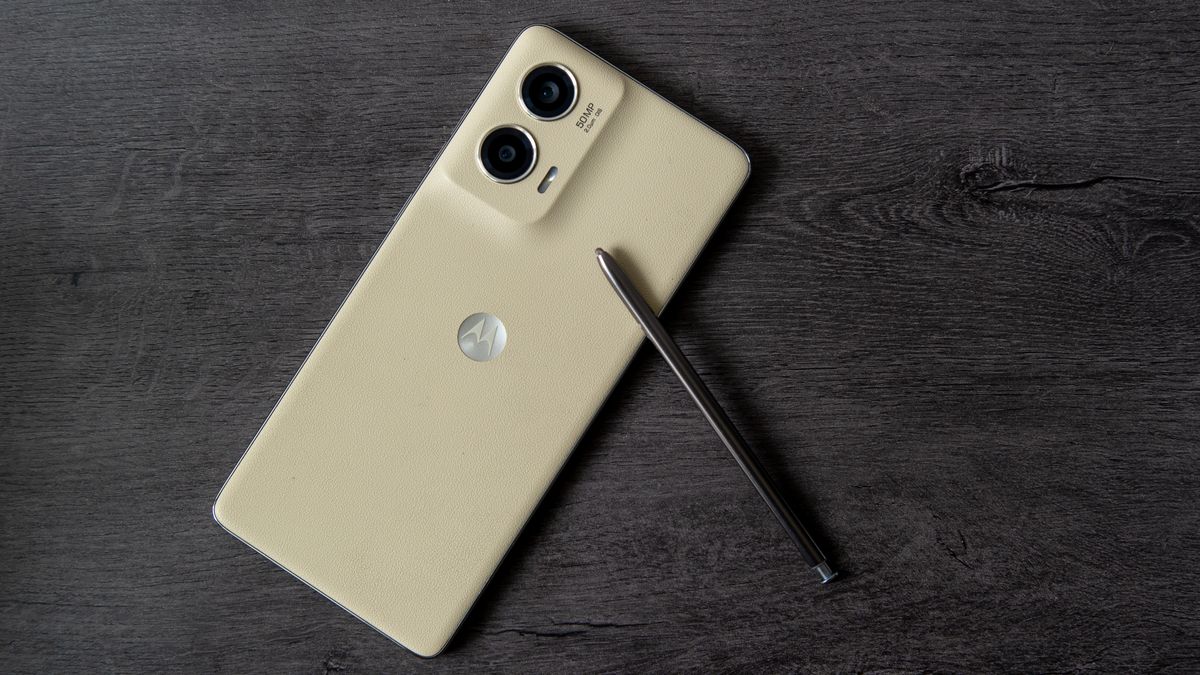











Discussion about this post